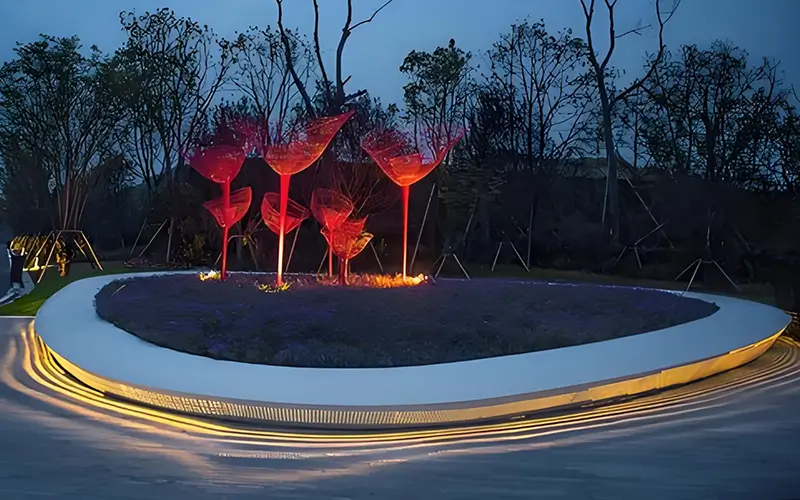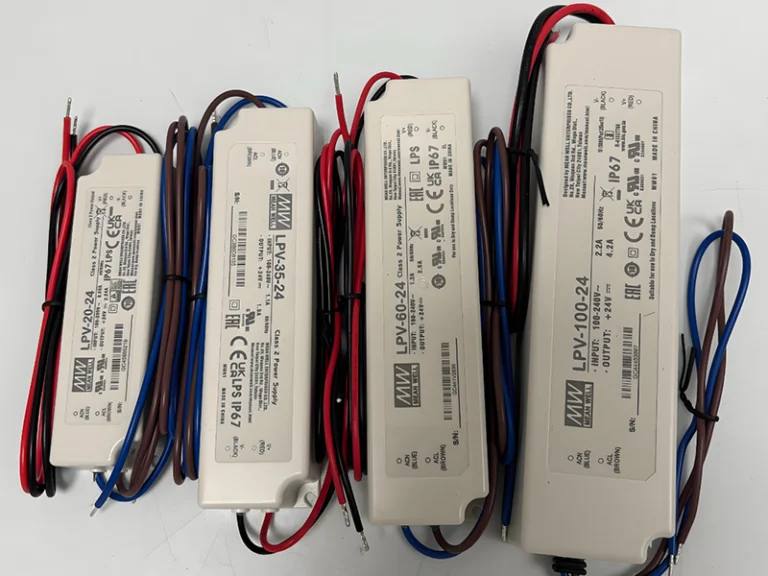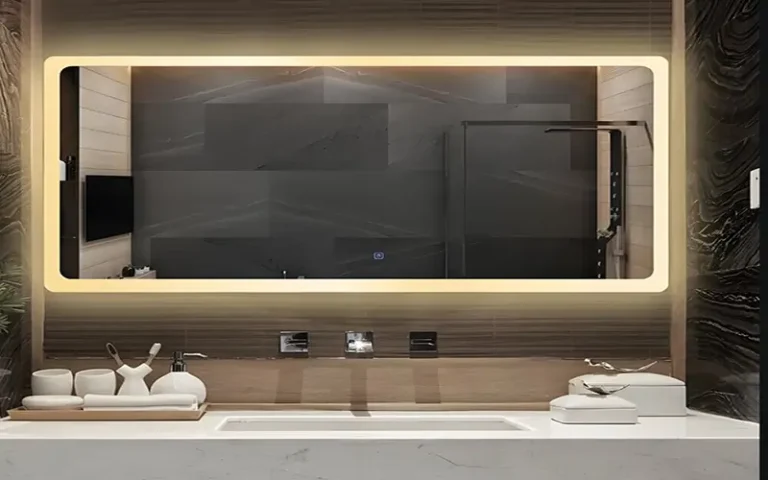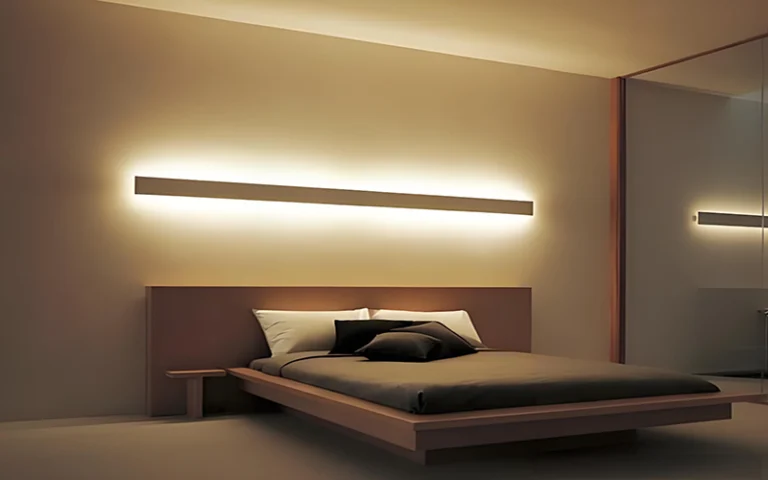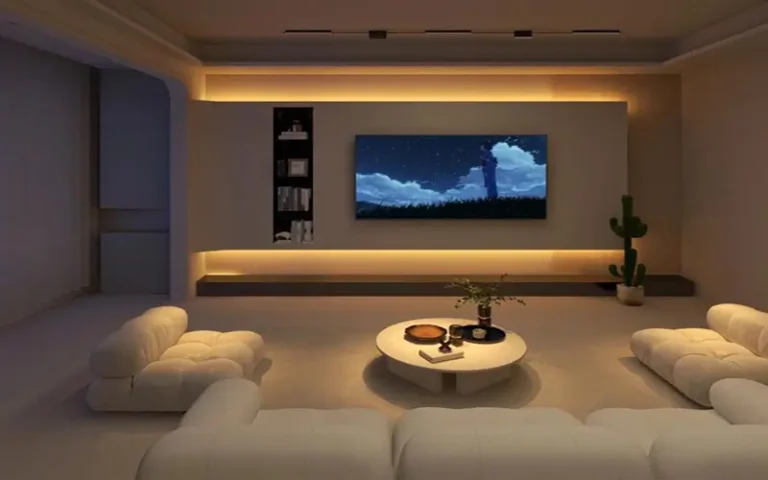Can Low Voltage LED Strip Be Used for Landscape Lighting?
Landscape parks are places for outdoor public or private leisure walks, and landscape lighting is very important. It not only enhances the beauty and functionality of outdoor spaces but also provides visibility and safety for people walking at night. In addition, it also highlights the beauty of gardens, paths, and architectural features. We can find a variety of LED lights in landscape lighting, and low voltage LED strip are popular because of their versatility and ease of installation. In this article, we will analyze the safety of low-voltage LED light strips in outdoor landscape lighting, as well as choose low-voltage LED strip and color temperatures to let low-voltage LED light strips illuminate your garden.
What is Landscape Lighting?
Landscape lighting refers to the use of outdoor LED lights to illuminate and embellish your garden or public park. It can enhance the visual appeal of gardens, courtyards, and architectural features.
There are a variety of LED lights in landscape lighting. Each LED light has a different role, mainly to highlight the natural and man-made elements of the outdoor space. The purpose of landscape lighting can range from purely decorative to functional, such as illuminating a walkway or providing security.
What is the Role of Landscape Lighting?
Many people think that the topic of landscape lighting is far away from us, but it is very close to our lives. As long as it is a garden, courtyard, space garden, etc. composed of all green plants outdoors, it is landscape lighting.
- Enhanced beauty: It increases people’s visual interest while improving visibility. It also highlights the beauty of plants, trees, water features, and architectural elements.
- High safety factor: The light in landscape lighting helps prevent accidents by illuminating roads, steps, and obstacles. Especially at night, it allows people who walk to see things to the side without being scared.
- Functionality: It allows outdoor spaces to be used after dark, making areas such as terraces and decks more functional and interesting.
- Good atmosphere: Different outdoor lighting colors and intensities can create a variety of moods, from cozy and intimate to bright and vibrant.
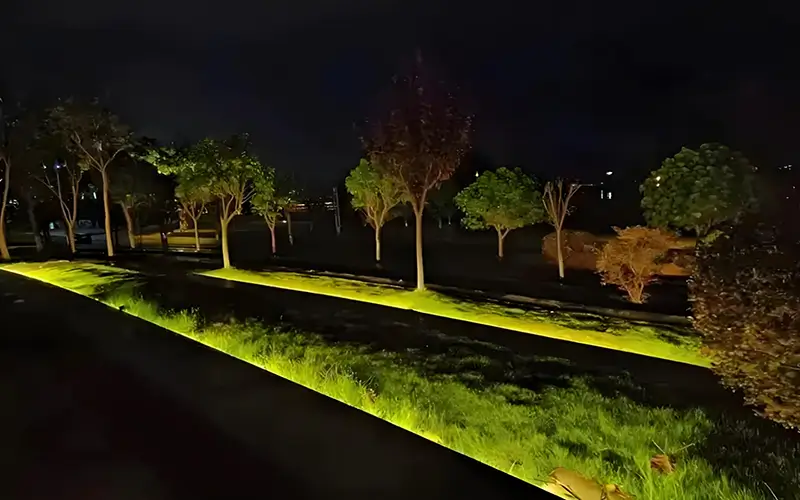
What Kind of LED Lights can Be Used for Landscape Lighting?
When we walk to the outdoor garden, it is not difficult to find that there are many kinds of landscape lighting lights. And they play different purposes. Moreover, the LED lights for landscape lighting are artistic and look very beautiful with green plants. For example, spotlights, street lights, step lights, light strings, LED light strips, etc.
- Spotlights: mainly various trees, architectural elements, tree shapes, and other specific features.
- Street lights: illuminate paths and sidewalks to ensure safety and beauty.
- Floodlights: provide extensive lighting for larger areas such as gardens or exterior walls.
- Deck lights: embedded in decks or stairs to enhance safety and add a sense of decoration.
- LED light strips: Low voltage LED strip is used for landscape lighting, very versatile, and suitable for accent lighting on paths, under steps, or around flower beds.
- Light strings: perfect for creating a festive atmosphere in gardens, large trees, and tree shapes or around outdoor seating areas.
Can Low Voltage LED Strip be Used for Landscape Lighting?
Of course, low-voltage LED strip, either 12V or 24V, can be effectively used for landscape lighting. First of all, LED strips are versatile and diverse, with various types of LED strips and LED neon flex available. Their flexible design allows them to be easily installed in a variety of locations and configurations, such as lining paths or wrapping around buildings.
In addition, as long as you choose the right waterproof grade LED strip, it can withstand outdoor conditions, including humidity and temperature changes. And LED strips consume less energy, so they are both economical and environmentally friendly.
How to Choose Low Voltage LED Strip for Landscape Lighting?
There are many benefits of using low-voltage LED strip for landscape lighting. But we need to choose the right waterproof LED strips according to the specific project and personal preferences.
- Brightness (lumens): Different landscape gardens are different in brightness, and the size of the space also needs to be considered. At the same time, it is also necessary to pay attention to the purpose of the LED light, whether it is accent lighting or general lighting.
- Color temperature: Color temperature is very important, and different color temperatures express different moods. So choose warm white (2700K-3000K) for a comfortable feeling, or choose cool white (4000K-6000K) for a modern, vibrant look.
- Waterproof rating: Make sure the LED strip has an adequate IP rating (IP65 or higher) for outdoor use, indicating that it can be dustproof and waterproof.
- Power supply: Make sure the low-voltage LED strip you choose is compatible with the available power supply and has the correct voltage and wattage.
- Customizability: Choose a strip that can be easily cut or extended to fit a specific area.
What is the Color Temperature of the LED Strip for Landscape Lighting?
Color temperature is a key factor in creating the atmosphere and mood of outdoor spaces. Not only one color temperature is used, it also requires different color temperatures to blend. The most common color temperatures for landscape lighting are:
Warm white (2700K-3000K): emits soft, attractive light, which is very suitable for a comfortable and relaxing environment. Most users do not like it too bright at night.
Neutral white (3500K-4100K): strikes a balance between warm and cool tones, suitable for general lighting. Mainly used in large spaces.
Cool white (5000K-6000K): provides bright, refreshing light, mainly used for task lighting.
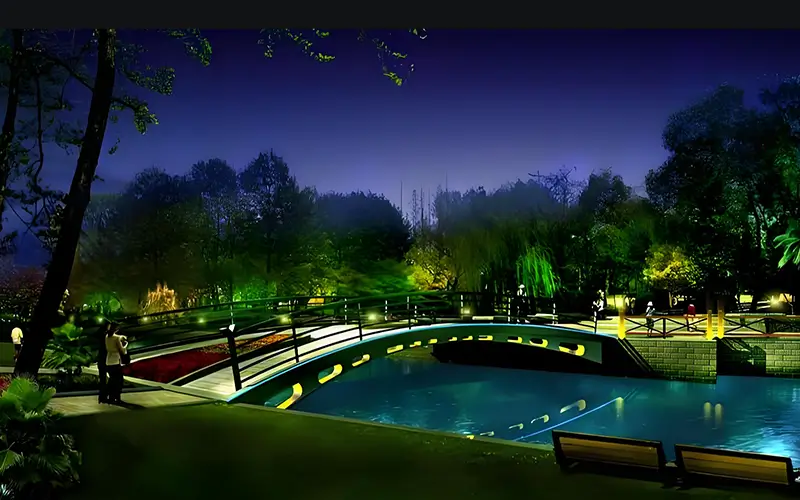
Pay attention when installing outdoor landscape lighting LED strips
For outdoor landscape lighting, it is very necessary to install LED strips correctly. Safety comes first, and then it is essential to achieve optimal performance and service life.
Fixed installation:
It is recommended to use mounting clips for installation because the outdoor environment is an unstable installation environment. So make sure the strip is firmly installed and will not sag or peel over time.
High waterproofness:
Make sure all connections and power supplies are protected from moisture. Use waterproof connectors and housings when necessary.
Power supply selection:
Calculate the total wattage of the LED strip and select a power supply with sufficient capacity. The correct voltage should be selected.
Placement:
Plan the placement of the lights to avoid glare and ensure uniform lighting. Consider viewing angles and potential obstacles.
Maintenance:
Check the lights regularly for damage and clean them to maintain brightness and appearance.
Summary
Low-voltage LED strip are one of the best choices for outdoor landscape lighting. Because they have multiple advantages: safety, flexibility, and durability. But when you choose LED light strips, please consider factors such as brightness, color temperature, waterproof rating, and power compatibility. Proper installation and maintenance are essential to ensure its life and performance. We are an LED light strip factory, please contact us if you have any needs.
FAQs
Of course, low-voltage LED strips can be used for landscape lighting. They have a high safety rating and are only available in 12V and 24V. Users need to choose waterproof ones with a high waterproof rating of IP67 or above, and all connections must be waterproof.
The brightness of LED strips is measured in lumens. For ambient lighting, 150-300 lumens per meter may be sufficient, while task or accent lighting may require 300-600 lumens per meter. This is just for your reference, depending on the desired effect and application.
Warm white (2700K-3000K) is usually the first choice for landscape lighting because it creates a comfortable and pleasant atmosphere. For evening use, many users will choose warm white as the main color. Of course, other color temperatures will also be used, such as cool white (4000K-6000K) can be used to create a more modern and brighter look.
Yes, but you need to choose the right waterproof rating. Be sure to communicate this in advance, as most low voltage strip lights are not designed to be used underwater. Also, make sure all electrical connections are secure and waterproof to prevent water infiltration and potential damage.

